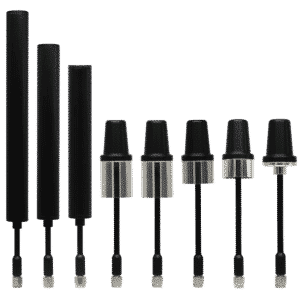Unmanned aerial vehicles (UAVs), or drones, are equipped with antennas that have a specific radiation pattern. Antenna patterning, the graphical representation of antenna radiation as a function of space, describes the shape of how antennas send or receive radio waves. Different UAV antennas have different radiation patterns, but drones always need reliable communications between the ground controller and the UAV to avoid collisions or crashes.
Onboard the UAV, antennas receive radio waves, or signals, from the controller. These antennas need to be mounted in a way that avoids interference from the frame, and that won’t limit drone maneuverability. Through telemetry, UAVs also use antennas to radiate signals back to the controller itself. Examples include battery life and signal strength. Throughout the entire controller-to-UAV link, all of the antennas work over the same set of radio frequencies (RF), typically within the 2.4 GHz or 5.8 GHz bands.
For designers, it’s critical to select the right type of antenna for the application. For example, linear polarized antennas support longer ranges because all of the energy is focused on a single plane. To ensure strong reception, however, both the transmitting and the receiving antenna must be aligned so that their radiation patterns have maximum overlap. Circular polarized antennas send or receive signals in a corkscrew-type pattern instead. They’re used commonly, but they’re not the only option.
SwarmLink™ antennas from MP Antenna are multi-polarized for improved coverage. With drones, changes in altitude and direction can cause polarization mismatches, signal degradation, and non-line-of-sight (NLOS) conditions. SwarmLink™ technology addresses these challenges and supports increased network thouroughput speeds for industrial and military applications. These UAV antennas are also extremely lightweight and Made in the USA.
SwarmLink™ antennas have a horizontal radiation pattern and is omnidirectional so that RF energy is radiated and received equally in all directions for full 360° coverage. This also provides UAV designers with greater flexibility for antenna mounting. With their vertical radiation pattern, these antennas provide a low angle of radiation for good long-distance transmission and reception. To learn more about these multi-polarized antennas for UAVs, contact MP Antenna.

